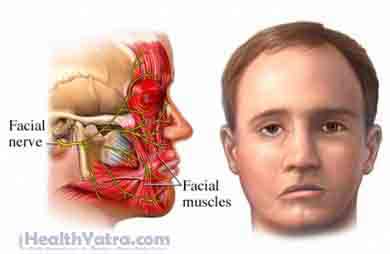Definition
Sarcoidosis is an inflammatory disease that may affect many different parts of the body. Small round spots, called granulomas, form in various organs. The spots hinder normal functioning of those organs.
The lungs are the most commonly affected organs. Granulomas in the lung leave less space for the air exchange that needs to take place. This can cause the lungs to stiffen. Other commonly affected organs are the skin, eyes, liver, and lymph nodes. Rarely, the brain may be affected.
Causes
Scientists do not know what causes sarcoidosis. It seems to be related to malfunctioning of the immune system. The disease may possibly be triggered by an infection or exposure to a toxin in the environment.
Some people may be more susceptible to sarcoidosis due to genetic or environmental factors.
Risk Factors
A risk factor is something that increases your chance of getting a disease or condition. Risk factors for sarcoidosis include:
- Age: 20 to 40
- Sex: female
- Ethnic descent: African-American, Northern European, Scandinavian, and Irish
Symptoms
Symptoms vary and can occur in different parts of the body, depending on where the granulomas form. Most symptoms develop in the lungs, skin, eyes, and liver. Multiple body systems may be affected. Symptoms may come and go. This disease is often acute, but in some patients it is chronic, waxing and waning.
Symptoms may include:
- Cough
- Shortness of breath
- Wheezing
- Chest pain
- Rash (may or may not be raised)
- Fever
- Pain or irritation of eyes
- Fatigue, especially with exertion
- Muscle weakness
- Night sweats
- Loss of appetite
- Weight loss
- Swollen lymph nodes
- Seizures
- Tremors
- Difficulty hearing
- Blurred vision or blindness
- Poor coordination
- Trouble walking
- Irregular heart rate
- Pain, swelling, and stiffness in the joints
- Facial paralysis ( Bell’s palsy)

Diagnosis
The doctor will ask about your symptoms and medical history, and perform a physical exam. There is no specific lab test that confirms a diagnosis of sarcoidosis. Instead, the diagnosis is made by noting a cluster of symptoms and a number of medical tests that are usually positive in patients with this condition.
In some cases there may not be any symptoms. The disease may sometimes be suspected based on the appearance of a routine x-ray.
Tests may include:
- Blood tests—to check for a variety of factors:
- A complete blood count to check for anemia
- Liver function tests to check for liver abnormalities
- Increased calcium levels, which can occur with sarcoidosis
- Elevated levels of angiotensin-converting enzyme (ACE), which is often released by the granulomas
- Urine test—24-hour urine test to check for elevated levels of calcium in the urine
- X-rays—a test that uses radiation to take a picture of structures inside the body
- Biopsy —removal of a sample of the affected tissue for testing
- Electrocardiogram (ECG, EKG) —a test that records the electrical activity of the heart
- Pulmonary function tests (PFTs) —tests to determine how well you can breathe
- Bronchoscopy —the insertion of a lighted tube into the lungs to look at the tissue and obtain a sample for biopsy. The doctor may also do a bronchoalveolar lavage. This involves flushing the lungs with fluid and collecting the fluid for analysis.
- Gallium scan—the injection of radioactive material into the body. The material collects in areas with sarcoidosis. A machine later scans the body and identifies areas with higher concentrations of the injected material.
- CT scan —a type of x-ray that uses a computer to make pictures of the inside of the body
- Eye exam—done with a special lighted instrument that allows the doctor to look inside the eye
Treatment
Treatment aims to ease symptoms and minimize permanent problems. Treatment may include:
Monitoring
You need regular medical and eye exams to monitor for symptoms and complications of sarcoidosis.
Medication
Drugs that may be prescribed include the following:
- Prednisone (the main treatment) is an oral steroid used to decrease inflammation.
- Methotrexate or azathioprine may be used for patients who do not respond to steroids.
- Hydroxychloroquine may be used to treat skin problems.
- Nonsteroidal anti-inflammatory agents may be used to treat musculoskeletal symptoms.
- Pulmonary rehabilitation programs may help improve lung function.
- Topical steroids may be advised for rashes.
- Eye drops may be used for mild eye problems.
Self-care
To help minimize your symptoms, follow these guidelines:
- If you smoke, quit.
- Avoid exposure to dust and chemicals.
- Notify your doctor at once if any symptoms develop or worsen.
Prevention
Although doctors do not know the exact cause of sarcoidosis, they believe infections or exposure to chemicals may bring on the disease. Steps for prevention may include:
- Don’t smoke. If you smoke, quit.
- Avoid exposure to chemicals and toxins.
- To prevent infection, wash your hands before eating or preparing food and after using the bathroom.
